We may earn money or products from the companies mentioned in this post.
I believe gray is deeply misunderstood. It has often been mistaken for a dull, depressing paint color even though it has repeatedly proved to us that it can bring sophistication, class, and charm to any room.
The problem with gray is the problem of plenty. There are too many shades of gray to choose from: warm, cool, neutral, charcoal, dark, light, it’s too much to choose from for a single paint color.
Different shades of gray paint affect a room in different ways. And you may end up painting your tiny living room charcoal gray because it is “in fashion” then realize it makes the room look congested but the job is done by then.
A common complaint is that you swear by Benjamin Moore but when it comes to gray, there are just too many choices. Or you may be confused between similar-looking shades because they all look the same to you.
Some of you may paint the room a light shade of gray only to realize later that you have taken away much of its charm and sophistication.
Some end up choosing a shade that makes their room look like they have just dealt with a tragedy: lifeless and depressing.
To all of you, I say. You have come to the right place.
This is a complete guide for choosing the best gray paint color. I list the 13 best Benjamin Moore Gray paint colors to help you in getting rid of the gray clouds in your life.
How to choose a gray paint color?
The different shades of gray make your life difficult when choosing the best one for your home. Unfortunately, there is no one size fits all when it comes to gray paint colors.
External factors like artificial lighting and the decor in your house play a big role in the final look. Hence, you should choose a paint color after testing it.
Here are some tips to follow when choosing a gray paint color for your home.
1. Take paint swatches home
Don’t finalize paint by just looking at it in the paint store or going by photos online. Take a few samples home to test them in your home setting. You should choose a variety of samples with both warm and cool undertones.
You may have decided on a warm undertone but it may be that when you test it, the undertone doesn’t match the decor hence keep your options open.
Place different shades side by side and then compare instead of looking at a shade in isolation because that will you a better idea about the differences in each.
2. Factor in the lighting
The lighting in your house is key to the final look. Test the paint swatches in different lighting conditions and see if it looks good. You have to observe the paint swatches at different times of the day to see how it reacts to changes in the amount of natural light.
The windows of north-facing rooms have more cool, blueish light streaming in which makes gray paints with warmer hues more suitable for perfect balance.
South-facing rooms receive direct, bright light which makes them suitable for both warm and cool tones.
East-facing rooms have yellow light streaming in through the windows in the morning and more blue light in the afternoon.
West-facing rooms receive little light in the morning and more in the afternoon.
A gray shade with a subdued undertone is best for east and west-facing rooms that have both kinds of light streaming in at different times of the day.
Another thing to consider is how the room will look under artificial lighting during the night. There are also times in the summers where the room receives both natural light and artificial light so test the swatch by switching on the lights in the morning.
3. Take a sample
After deciding on 3 to 4 swatches, buy their samples and paint them on a board.
4. Factor in the decor
Your home decor will ultimately decide whether you want a warm or cool undertone. Place the paint sample beside the tile or cabinets or couch to see if it complements it. If you have an existing shade of gray in the room, see whether your gray paint complements it or clashes with it.
Test the paint samples on all the walls before deciding.
Baseboards, floors, and the color of wood all have a part to play when deciding on the best gray paint color.
Warm Vs Cool Grays
Even though gray is what you would call the “neutral”, it still has undertones that decide whether it falls in the warm or the cool camp.
Why should you know this? Because a lot depends on the undertone when deciding on gray paint for your house.
Warm grays are shades that have yellow or red or brown undertones. Living rooms are mostly done in warm gray because it makes the room feel welcoming.
If your house feels stark then warm gray is suitable for it. Houses with brown upholstery or warm accents like yellow are better off with warm grays.
Grays that have bluish, greenish, or purplish undertones are cool. They are suitable for modernized houses that have yellowish or redwood tones. Cool grays complement bathrooms well.
13 Best Gray Paint Colors by Benjamin Moore
1. Edgecomb Gray
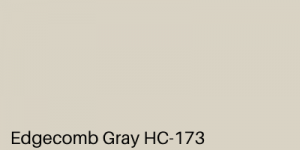
Edgecomb Gray is best described as a timeless hue that has an earthy touch. It is considered a warm hue that complements any setting whether it is your kitchen cabinet or bedroom. If your bedroom has rustic decor, then Edgecomb gray is perfect for it as it will highlight those decor items instead of stealing their thunder.
The versatility of the paint color makes it a crowd-favorite. It has a green-gray undertone. Edgecomb gray tends to look a bit dull in dark hallways.
2. Revere Pewter
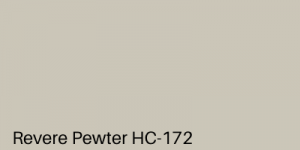
This has been a best-seller for Benjamin Moore and it’s not difficult to see why. It has warm undertones that look best in well-lit rooms. The warmth of the color is best highlighted when it is applied to the exteriors that have dark shutters.
Even though it’s neutral, it manages to bring warmth and comfort to the interiors. If you have small rooms, then this neutral can make it appear larger without lending austerity to the room.
You can add charm and drama to your house by pairing this shade with turquoise or lime green.
3. Wickham Gray
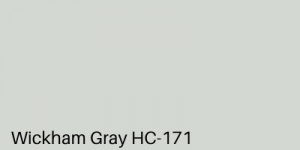
Wickham gray has a blue-green undertone. It has a cool undertone that makes it perfect for rooms with water in it. If you have a small bathroom, you can think of Wickham Gray as it will make your bathroom appear larger.
If you have a north-facing room, then Wickham gray can lend an icy touch to the room. You can pair this with Chantilly Lace or Oxford White from the same brand. The colors are flexible and work well for both traditional as well as contemporary decors.
4. Gray Owl
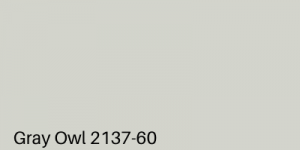
Benjamin Moore Gray Owl is a tricky shade primarily because of its undertones. Undertones are affected a lot by the lighting in that room. So, don’t go by what the internet says. It is best to test it in your home lighting before making a decision.
The color is considered to be a warm one but has blue-green undertones which make it appear like a cool hue. It is not recommended for the exteriors because southern light can wash it out.
5. Moonshine
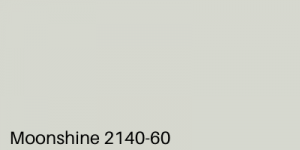
Moonshine is a soft, light shade that has hints of blue in it. It works well for small office rooms and congested spaces.
One problem with this shade is that it can be a bit too light for some people. It can seem stark in a sparsely furnished house. Also, you have to maintain it well for it to remain classy. It pairs well with Desert Twilight, Spring Violet, and Bittersweet Chocolate from the same brand.
6. Metropolitan
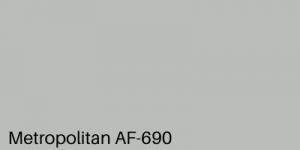
Metropolitan was Benjamin Moore color of the year 2019 because it exudes balance. It has a cool undertone that will complement your blue or green accents in the room.
Whether it is rich colors or soft pastels, Metropolitan can adapt to all. This color will also complement walls where you have brown floor-to-ceiling bookshelves and cream-colored drapes. The color is perfect for soothing decor that will calm the senses after a hectic day in the office.
7. Coventry Gray
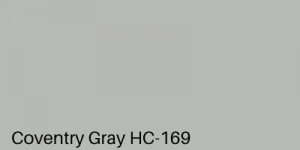
Often considered to be a stormy gray, Coventry Gray is for those who want a darker and heavier shade of gray. It is a dark bluish kind of gray that lends uniqueness to any space.
You have to be careful before painting your room in this shade because depending on the light, it can either make your room look majestic or dull. White trims suit this shade and you can contrast it with woodwork or white cabinets in the kitchen.
8. Collingwood Gray
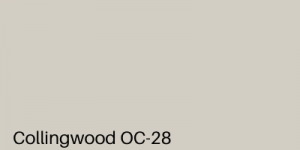
Collingwood gray is a warm gray shade that looks majestic in south-facing living rooms as it gets lots of natural light. Collingwood gray doesn’t look washed out which can be the case with many gray shades.
If your room is loaded with lots of decor elements, then this neutral shade will help to strike a balance and prevent it from looking congested.
9. Stonington Gray
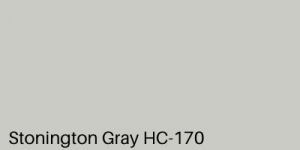
Stonington gray falls in the cool hues category. This neutral shade has enough color without detracting anything from the art pieces or decor that you choose to put in the room.
It looks regal when paired with navy blue and can complement black accents. It pairs well with Boothbay Gray and Horizon. This gray shade manages to add depth to any space without making it too dark.
10. Classic Gray
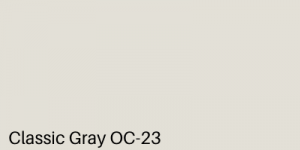
Classic gray has soft undertones and can easily pass off as an off-white shade. You can bring the greenery inside by adding plants to your decor if you paint the room in this shade. Classic gray needs more colors or decor elements in your room as compared to other grays because it can sometimes be too bland on its own.
Classic gray works well as an exterior trim color. If you want the focus to be on your decor items, rugs and upholstery then this is the shade for you.
11. Chelsea Gray
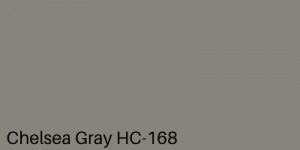
Chelsea Gray is on the heavier, darker gray side of the spectrum. It offers good contrast with white trims on any wall. Some colors that look good with this shade are Butternut Squash and the White Mountains.
Chelsea gray oozes sophistication when paired with gold paneled mirrors or dark brown/black furniture. It gives a modernized look to any room and works well with wainscoting.
12. Rockport Gray
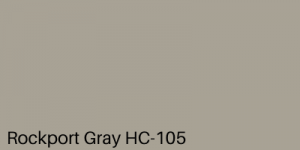
Part of the Historic Color collection of Benjamin Moore, this Rockport Gray is a saturated earthy hue that exudes lots of warmth. If you have wall panels, it will prevent this shade from looking dull and heavy.
Copper light fixtures and picture frames are some decor elements that will look good with this shade. You can also go for a monochromatic look by pairing it with other neutrals. Duxbury Gray and Manchester Tan from the same brand will pair well with this shade.
13. Amherst Gray
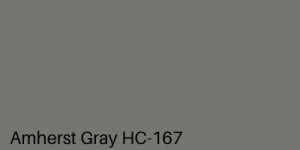
Amherst Gray seems very similar to charcoal gray. It has a slight green undertone that lies on the darker end of the color spectrum.
Though this color isn’t the first choice for bedrooms Amherst gray is a popular shade for painting the decks, kitchen islands, bathroom vanities, and front doors. It pairs well with Fog mist and Wickham Gray from the same brand.
What to Avoid in Choosing Gray Paint?
Gray Paint can be tricky to choose. The different shades and different exposures in your house make it a tough decision. So, here is what you should AVOID while choosing gray paint.
- When choosing a gray paint heck, when choosing ANY paint, you must take the swatches back home to test it in your home lighting. Avoid making any decisions in the store.
- Avoid testing small swatches. Take a sample and apply it on a big board then test it.
- Avoid making a decision when the paint is wet. Wait for it to dry because some paints look different when they have dried.
- Avoid gray hues with cool undertones in rooms with north-facing windows. These rooms receive a lot of bluish light hence gray paint with blue undertones may end up overdoing the blue.
- Avoid using too little paint. Gray can seem dull when not done properly. Your walls contribute 60% of color to space while 30% is from the floor covering or upholstery. 10% is from accents or artworks. Ensure that the paintwork is done well and add good decor pieces to add life to the room.
I am sure by now you have realized that it isn’t the paint but how you use it that matters. Gray paint is considered dull because people make mistakes while choosing the best shade for their house or end up using it in the wrong space.
I hope this guide has helped you in knowing your grays and the subtle differences that come with its different shades. Explore your options well and make the best decision.